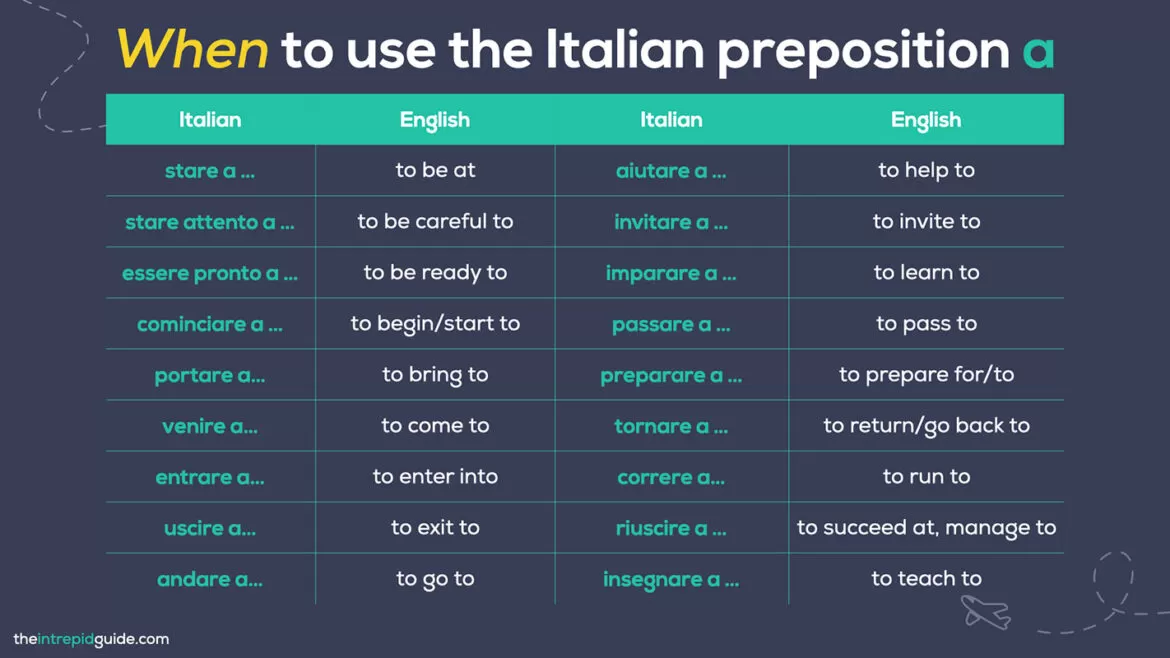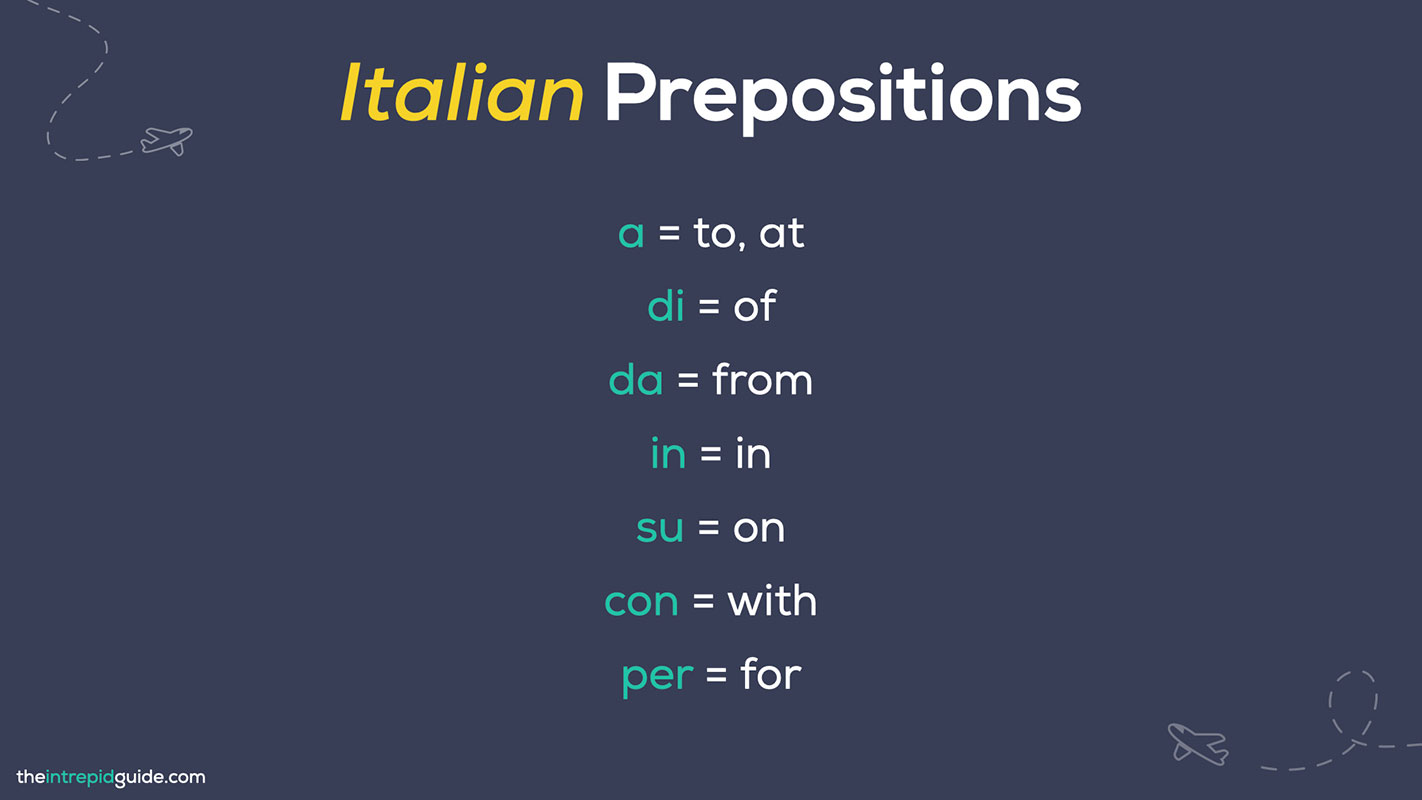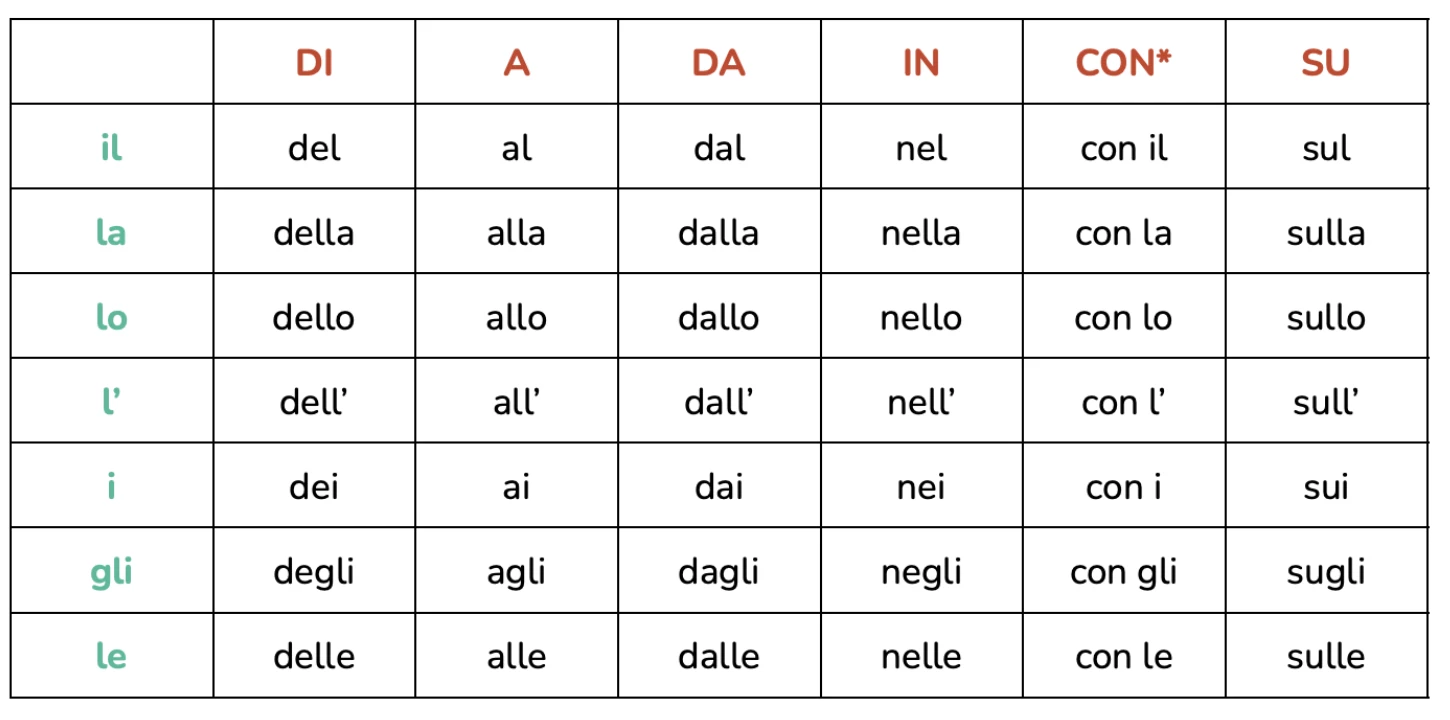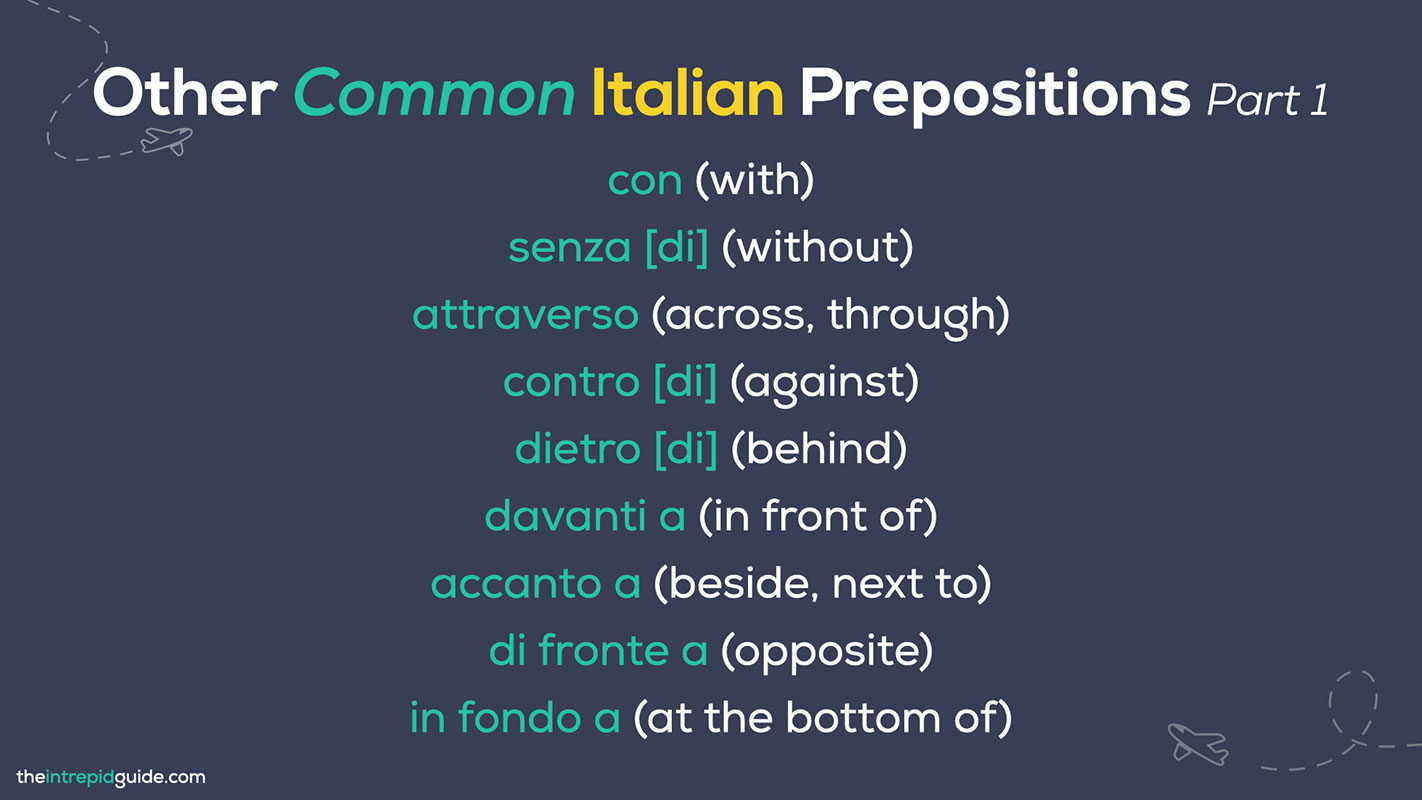[ giada’s suitcase] material → il bicchiere è di vetro. Web in italian, there are nine simple prepositions. Web one of the eight italian parts of speech, prepositions are short but essential words which are placed after a verb, noun, or adjective in order to indicate a relationship between that word and the noun or pronoun that follows. Web the main prepositions in italian are: Web italian prepositions and articles chart.
Web the italian prepositions are: Web common prepositions in english include in, on, with, to, of and from, and in italian in, a, di, da, per, con, su, and fra/tra. Web scratching your head over italian simple and articulated prepositions? Di — of/from/at/about, and can also be used to indicate possession. A (to, at) di (of) da (from) in (in) su (on) con (with) per (for) italian prepositions chart.
Web don't let the learning stop here. If this sounds to broad or confusing, let's look at which words in english are prepositions. Di — of/from/at/about, and can also be used to indicate possession. The italian preposition a is generally summarized as to, at, or in, but it has a few more meanings and uses than that. Below is a list of the simple prepositions and a few example sentences.
With this guide, you’ll know when to use each preposition, and you’ll have a complete reference to come back to. A preposition is a word or set of words that indicates location (in, near, beside, on top of) or some other relationship between a noun or pronoun and other parts of the sentence (about, after, besides, instead of, in accordance with). Below is a list of the simple prepositions and a few example sentences. Di → “of” or “from”. Articulated prepositions, on the other hand, are formed by combining a simple preposition with a definite article, such as “il,” “lo,” “la,” “l’,” or “i,” “gli,” “le,” depending on the gender and number of the noun that follows. In the lessons of our italian course a1.1 we have learnt many prepositions. When describing someone as capable of doing or determined to do something, a preposition is required between the adjective and verb. Joining an italian preposition with a definite article. Web one of the eight italian parts of speech, prepositions are short but essential words which are placed after a verb, noun, or adjective in order to indicate a relationship between that word and the noun or pronoun that follows. [ giada’s suitcase] material → il bicchiere è di vetro. Web the simple prepositions in italian are “di,” “a,” “da,” “in,” “con,” “su,” “per,” “tra” (or “fra”). The other kind of preposition in italian is articulated. We list them not in alphabetical order but in how italian students learn them in school: Di becomes de and in. Di, a, da, in, con, su, per and tra/fra.
Web Prepositions Are The Words That Explain How The Rest Of The Words In A Sentence Are Connected Or Related.
Joining an italian preposition with a definite article. Web learn how to use italian prepositions correctly by following simple rules and practical examples to speaking like a native. The prepositions in, a, su, a, di, da when followed by a definite article, combine into one word. Web the basic italian prepositions are di, a, da, in, con, su, per, tra/fra.
Below Is A List Of The Simple Prepositions And A Few Example Sentences.
Web common prepositions in english include “in,” “on,” “at,” “with,” and “by.” they help us express where something is, when something happens, and how things are related to each other. As a chant, making it easier to memorize them. These are called simple prepositions. The other prepositions don't have a tense form, even when matched with the article.
Web Don't Let The Learning Stop Here.
When describing someone as capable of doing or determined to do something, a preposition is required between the adjective and verb. Web italian prepositions are tiny language blocks which are incredibly important to ensure you deliver the right meaning. Web the italian prepositions are: Web in italian there are 8 prepositions:
Di, A, Da, In, Con, Su, Per, Tra, Fra.
Di, a, da, in, su, and per can be simple, when they are used alone, without article; In the lessons of our italian course a1.1 we have learnt many prepositions. Web when to use di, a, da, in, con, su, per, tra, fra. You can read about how prepositions and articles merge in our article on articulated prepositions.









